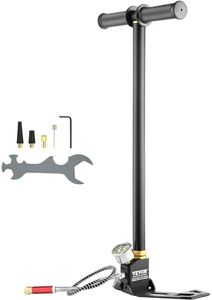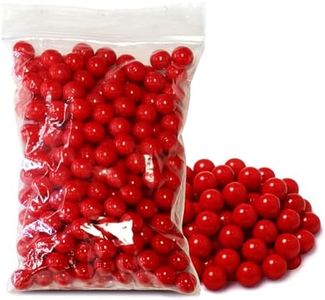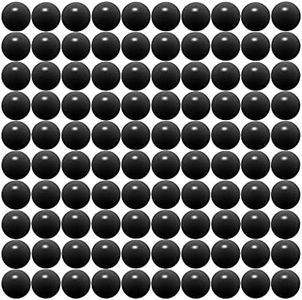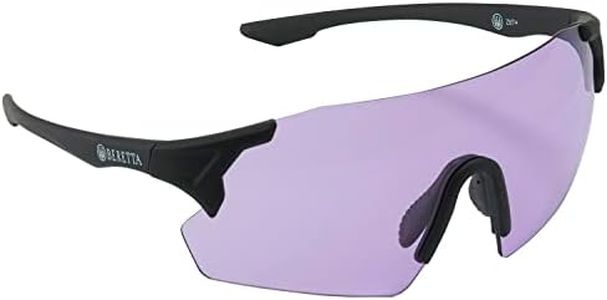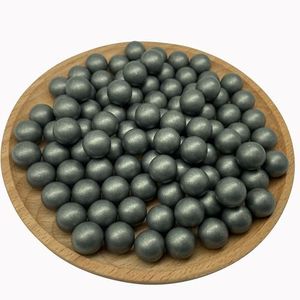We Use CookiesWe use cookies to enhance the security, performance,
functionality and for analytical and promotional activities. By continuing to browse this site you
are agreeing to our privacy policy
6 Best Air Pistols
From leading brands and best sellers available on the web.By clicking on a link to a third party's website, log data is shared with that third party.
Buying Guide for the Best Air Pistols
Choosing the right air pistol is all about understanding your own needs and matching them with the right features. Air pistols can be used for different purposes such as target shooting, plinking (recreational shooting), or even pest control. Before you buy, think about how and where you’ll use the air pistol, your experience level, and your comfort with maintenance. This helps guide your search so you choose a model that feels balanced, fits well in your hand, and performs as you expect.Power SourceThe power source describes how the air pistol is powered. Common types are spring-piston, CO2, pneumatic (pump), and pre-charged pneumatic (PCP). Spring-piston types require manual cocking with every shot and are very reliable, but can be physically demanding. CO2 pistols are easy to use and good for quick follow-up shots, but you’ll need to regularly buy CO2 cartridges. Pneumatic and PCP models use compressed air and can offer more power and consistency, but may require extra equipment like pumps or tanks. Your choice depends on whether you prefer ease of use, low ongoing costs, or performance.
CaliberCaliber refers to the diameter of the pellet the pistol shoots, usually .177 or .22 inches. Generally, .177 caliber is more common for target shooting because of its higher velocity and flatter trajectory, making it good for accuracy at longer distances. .22 caliber is larger and delivers more impact, making it better for close-range plinking or small pest control. If precision shooting is your goal, .177 is a safe bet. For greater stopping power at short range, consider .22.
VelocityVelocity is a measure of how fast the pellet leaves the barrel, typically given in feet per second (FPS). Higher velocity usually means the pellet will travel flatter and further, but extremely high speeds are rarely necessary for casual target shooting. Pistols with 300-500 FPS are usually sufficient for target practice and plinking, while models over 500 FPS might be overkill and could require more careful handling. Choose lower to moderate velocities for indoor or casual use, and higher velocities if you’re shooting outdoors or need more power.
Action TypeAction type tells you how the pistol loads and fires. Single-shot air pistols require you to reload after every shot, offering more control and easier maintenance. Multi-shot or semi-automatic pistols can shoot repeatedly before reloading, which is fun for plinking and good for practicing rapid fire, though they may be more mechanically complex. Single-shot options are great for beginners or precise target use, while multi-shot or semi-automatic types suit those who want more shooting without frequent reloading.
Sights and MountsSights guide your aim, and most air pistols come with basic iron sights. Some offer fiber optic or adjustable target sights for better visibility and accuracy. Others are compatible with optics like red dot sights or scopes, which can help with precise shooting. If you have trouble with basic sights or plan to shoot at longer distances, look for models with adjustable or upgradeable sight options. Simple fixed sights are fine for casual use and plinking.
Build and ErgonomicsBuild quality and ergonomics refer to how the air pistol feels in your hand and how well it is put together. Some are lightweight and compact, making them easy for beginners or younger shooters. Others have more weight for realistic feel and control, which some shooters prefer. Pay attention to grip shape, trigger pull, and overall balance. Try to handle a few different types if you can. Choose a pistol that feels comfortable and steady in your grip, especially if you plan to shoot often or for extended periods.
Safety FeaturesSafety features include manual safeties and automatic safeties that prevent accidental firing. This is especially important if you’re a beginner or if the pistol will be stored in a household with children. Some models have extra-deep trigger guards, blocking accidental pulls, while others may feature visible indicators for safe and ready modes. Always pick an air pistol that matches your safety requirements and comfort around firearms.
